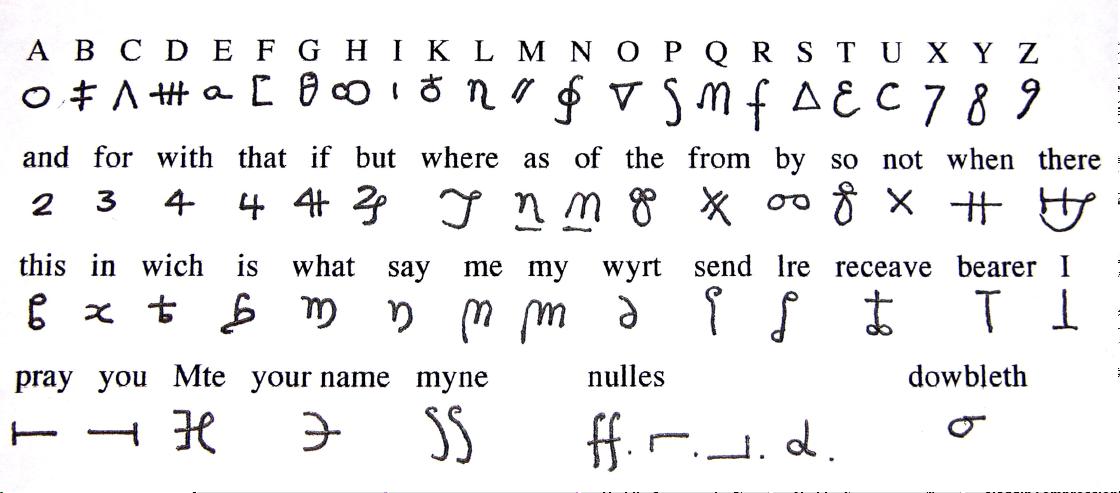Cryptography
Cryptography was a very important factor in international relations during the renaissance. It was not enough to hide a message, it was also necessary to encrypt it as well, so that even if the message was found it would be undecipherable. Thrones and lives depended upon the security of these codes, and one of them was central to the trial and execution of Mary, Queen of Scots.
In March of 1586 Anthony Babbington, together with six other young Catholic gentlemen, sat in the Plough Inn in Temple Bar and hatched out a plot to free Mary, put her on the throne and return England to the Catholic faith. On July 6th he received a message from (as he thought) Mary inviting him to correspond with her. Babbington replied with a detailed account of how he and his conspirators intended to liberate her, and entrusted the letter to the same messenger who had brought the letter from Mary, a Catholic by the name of Gilbert Gifford who had been commended to her by the French Embassy.
Gifford was, in fact, in the pay of Sir Francis Walsingham, Elizabeth's spymaster and Princial Secretary. Walsingham knew that the only way he could persuade the Queen to execute Mary was to present her with proof of Mary’s co-operation with a plot to assassinate Elizabeth. Over the next week and a half messages were passed to and fro between Mary and Babbington hidden in the bung of a beer barrel to sneak it past Mary's guards.
Once Walsingham received any letter to or from Mary he handed it over to Thomas Phelippes, one of Europe’s finest cryptanalysts of the period and an excellent forger to boot. Phelippes had little trouble deciphering the code, thus giving Walsingham complete knowledge of Mary’s plans. When Mary wrote to Babbington on July 17th she implicated herself by requesting that he ensure that she was released simultaneously with, or before Elizabeth’s assassination.
Walsingham then had Phelippes add a postscript to Mary’s letter, requesting details of the other conspirators. Babbington’s reply gave Walsingham all the information he needed to arrest Babbington and the other conspirators by the 15th August. Mary herself had been arrested and charged with treason on the 11th.
The code Mary used was what is now called a nomenclature, i.e. a symbolic substitution code (where individual letters are replaced with symbols) that included further symbols for common words, spaces and one to show that the next letter is doubled. The key, and a copy of Mary's own letter with Phelippes postscript is given below, so that interested readers may decipher it for themselves.

